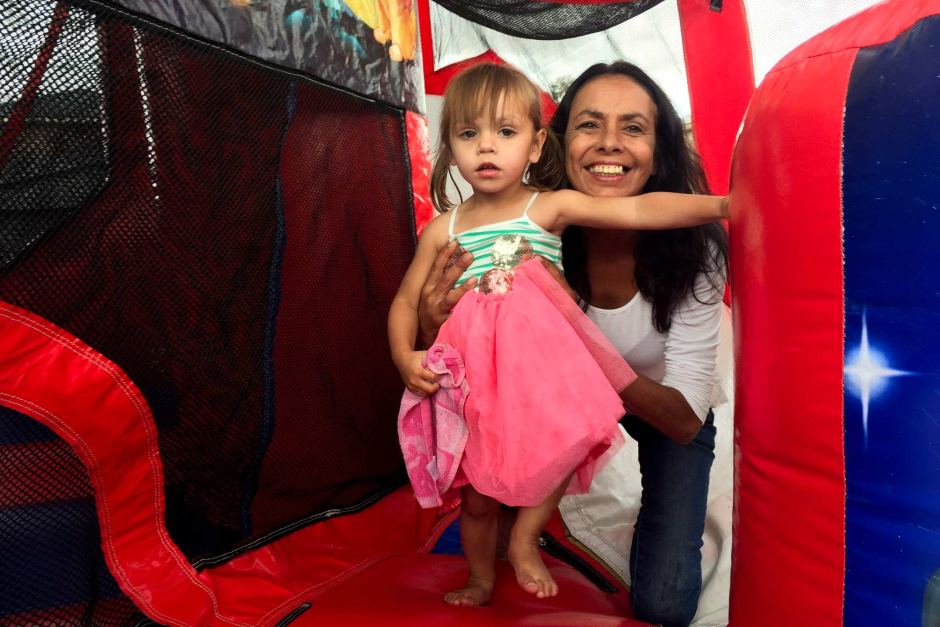
Tanya Day and her granddaughter
In Australia, for Aboriginal women and their families, the wheels of justice do not turn at all, but they do try to grind the people into dust. On December 22, 2017, Tanya Day, a 55-year-old Yorta Yorta grandmother, “died of traumatic brain injuries” in police custody, in the Castlemaine Police Station, in Victoria, Australia. Next month, the coroner is expected to release her report. Tanya Day’s family and supporters have asked the coroner to consider systemic racism. as a cause of death. If the coroner agrees, a new standard may have been set. Whatever the coroner decides, Tanya Day – like Cherdeena Wynne, Ms Dhu, and scores of other Aboriginal women– did not “die” and was not “discovered”. Tanya Day was killed in police custody. Harrison Day, Tanya Day’s uncle, died in police custody, also in Victoria. Harrison Day died, or was killed, June 23, 1982, 37 years to the day. From 1987 to 1991, the Royal Commission into Aboriginal Deaths in Custody met to discuss Harrison Day’s death and those of 99 other Aboriginal women and men. They issued a raft of recommendations, of which more than 30% have never been implemented. After Ms. Dhu’s death in custody, in 2014, promises were made but Western Australia has not introduced a single law emerging from the circumstances of Ms. Dhu’s death. From Harrison Day, in 1982, to Tanya Day, in 2017, to today, the line of murders of Aboriginal women and men in custody is direct and genocidal.
By all accounts, Tanya Day was a vivacious, lively, politically engaged woman. She was an activist who campaigned to stop the deaths of Aboriginal women and men in prison. At the time of her death, she was actively helping the family of Tane Chatfield, a young Indigenous man who died in police custody. She was also on what her family calls a health craze, involving regular exercise and healthy diet. On December 5, 2017, Tanya Day boarded a train to Melbourne. According to her family, she had not been drinking regularly, but on that day, she had. She fell asleep on the train. When the conductor awakened her for her ticket, she was confused. There is no report that she was aggressive. The conductor called the police. The police took her off the train and took Tanya Day to the Castlemaine Police Station. The charge was public drunkenness. The police called the family to come fetch her. By the time they arrived, Tanya Day was hospitalized. She died seventeen days later.
Tanya Day fell in her cell in the police station five times, which caused traumatic brain injury. She lay, alone, on the floor for hours. Tanya Day should never have been in that police station. The Royal Commission into Aboriginal Deaths in Custody strongly recommended doing away with public drunkenness laws. Subsequent scholarship and experience have supported that recommendation, pretty much uniformly. The laws that criminalize public drunkenness remain on the books. As one human rights advocate noted, “Most Victorians have committed the offence of public drunkenness.” If Tanya Day had been White, she would have been allowed to stay on the train and sleep it off. Even if not, someone who needs assistance to stand belongs in an emergency room, not a police station cell. Australia has known all of this for decades, formally, and has done less than nothing. That kind of inaction is a key ingredient to genocide as to femicide. What happened to Tanya Day? Australia.
(Photo Credit: ABC News Australia)